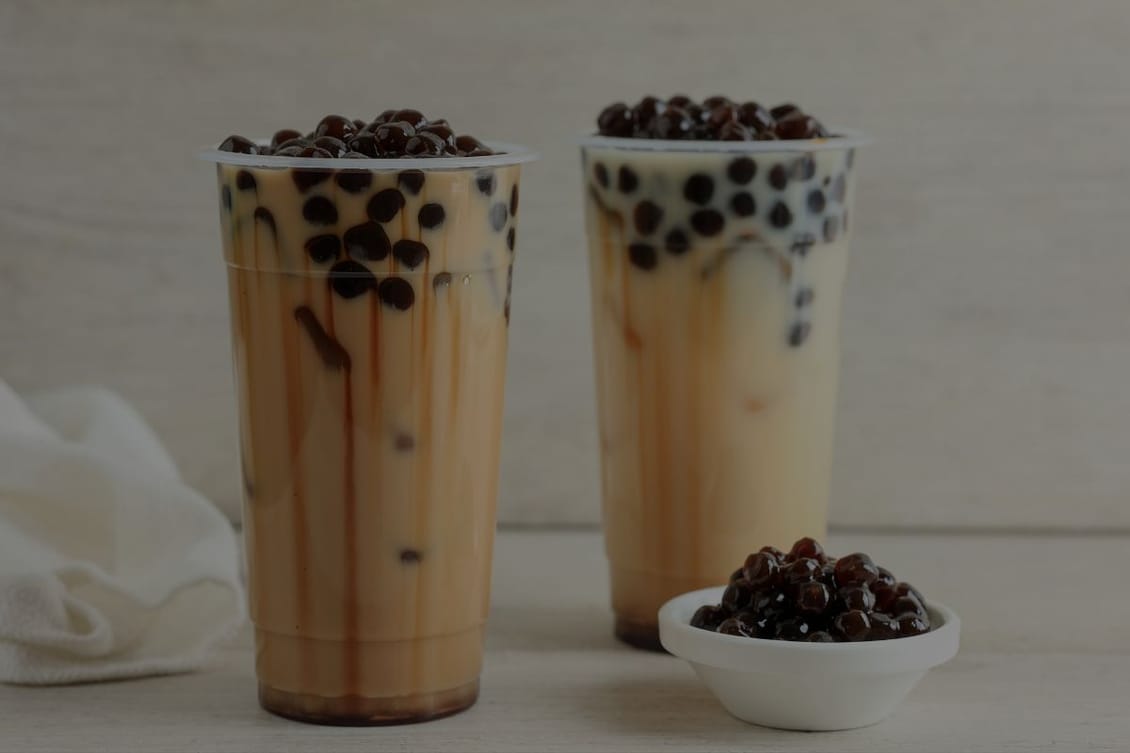
Mixology meets…tea?
In summary, that’s how bubble tea came about.
In the late 1940’s, mixologist Chang Fan Shu opened a tea shop in Taiwan, selling cold hand-shaken teas called shou yao. As time went on, tea drinking evolved. By the mid-1980s, the famous tapioca balls called fen yuan (now called boba) were added to the recipe. Since then, boba tea (now also widely known around the world as bubble tea) steadily grew in popularity, and was adopted by other East Asian cities.
Today, bubble tea is one of Taiwan’s most loved drinks. And that love has spread worldwide.
By the turn of the millennium, bubble tea had popped up everywhere from Bangkok to London, and even featured on mainstream menus at fast-food chains like McDonalds.
Now, bubble tea shops are commonplace on busy high streets in every major city we can think of. They boast a plethora of unique (and sometimes pretty out-there) flavours. Anything from chocolate, passion fruit to cream cheese…and even crab.
Often served in clear disposable cups with wide straws, bubble teas have become a bit of a status symbol for younger generations.
And it’s largely thanks to TikTok. In 2023, the hashtags #bubbletea and #bobatea were viewed almost 9 billion times.
Bryan Loo, founder of Tealive, Malaysia’s largest bubble tea brand, told World Coffee Portal: “People share photos and videos of their colourful and aesthetically pleasing bubble tea creations on Instagram and TikTok, sparking interest and curiosity among their followers”.
And that’s a key aspect of bubble tea’s success: the drink and its packaging both lend themselves to visual representations online.
Bubble tea businesses around the world are gaining traction, including:

As bubble tea grows in popularity, the market is becoming saturated with brands – and it’s increasingly difficult to stay competitive. Companies face the same fundamental challenges as other F&B firms – from regional complexities in consumer preferences and regulations, to supply chain disruptions and labour shortages.
And there’s the ingredients of the tea, too. In its traditional form, bubble tea is made from milk – and suppliers need to diversify into plant-based alternatives in order to attract younger demographics. According to research by Arla, 49%% of Gen Z are ashamed to order milk in front of others, underpinned by concern for the planet.
Since its inception, bubble tea has been hailed as a health drink – and in its original form, it is relatively low in calories. But the customised designer drinks (and all their fancy toppings) come at a nutritional cost. They’re often laced with sugar-based syrups; and the boba pearls are made from tapioca starch, which are sometimes sweetened by tea makers.
So today’s popular bubble tea drinks can contain around 8 teaspoons of sugar per 500ml, or 11 teaspoons of sugar per 700ml serving – coming to 335 and 469 calories respectively. This means there’s a real risk that bubble tea will fall out of fashion pretty quickly, as health-conscious consumers catch on to their real nutritional value.
Right now though, the bubble tea market is booming, and doesn’t show signs of slowing. Bubble tea social media trends are holding firm and the drink continues to be the must-have tapioca-shaking accessory to garnish popular social media posts.
The global bubble tea market is expected to grow at a CAGR of 7.9%, from $2.89 billion in 2023 to $3.12 billion in 2024.
And with bubble tea brands like American Kung Fu Tea dubbing 30 April as ‘National Bubble Tea Day’ to boost bubble tea sales and popularity, bubble teas are on an upward trajectory.
So what’s next?
We expect to see more tech integrations in the bubble tea segment, with AI and blockchain helping to increase efficiencies, create transparency around ingredient sourcing and sustainability, and protect supply chain resilience. And these technologies could support the development of healthier bubble tea options to meet the demands of the market – with lower sugar, lower calorie, and hyper-customisable drinks.
Register now to attend InFlavour 2024 happening from October 1-3 at Riyadh Front Exhibition and Conference Center (RFECC).
Take your seat at the InFlavour table, a government-backed and world-leading B2B food event by Tahaluf.
E-mail address SubmitWant to keep up to date with all our latest news and information? Enter your name below to be added to our mailing list.
E-mail address Submit